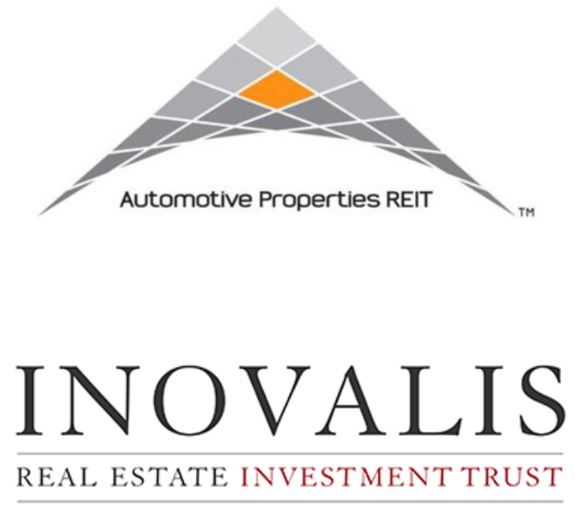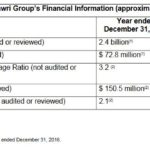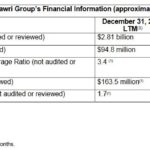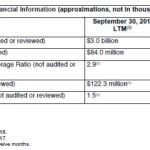Contents
A recent article on a highly followed investor website suggests that two small cap TSX listed companies are appropriate investments for Tax Free Savings Accounts (TFSA).
For long-term risk averse investors, neither company would be an appropriate investment.
Introduction
Occasionally I will stumble across an article in which a writer recommends as an attractive investment a company / companies with which I am unfamiliar. Out of curiosity I may conduct a very high level analysis to see whether a more comprehensive analysis is warranted.
In a very recent article with a catchy title (Tax-Free Fortune: 2 Stocks to Pay You $5,000 a Year With a $50,000 TFSA), the author suggests fellow investors may wish to consider investing in Automotive Properties Real Estate Investment Trust (APR-UN.TO) and Inovalis Real Estate Investment Trust (INO-UN.TO).
Upon reading the title of the article, my suspicion was that these companies are totally inappropriate investments for less sophisticated investors or investors with a low tolerance for risk such as me. After all, a 10% annual return in our current low interest rate environment certainly suggests an above average level of risk.
While I would never remotely consider investing in either of these two companies I nevertheless wish to provide my thoughts as to why fellow investors should look past the alluring yields.
Automotive Properties Real Estate Investment Trust
APR-UN.TO is a Real Estate Investment Trust (‘REIT’) which was formed primarily to own income producing automotive dealership properties located in Canada. This is a relatively new REIT having commenced operations on July 22, 2015 following completion of an initial public offering (‘IPO’) of units.
In connection with the IPO, the REIT indirectly acquired a portfolio of 26 commercial properties from certain members of the Dilawri Group, and leased same to the applicable member of the Dilawri Group (list of dealerships).
The REIT is externally administered by the Dilawri Group pursuant to an Administration Agreement. The Strategic Alliance Agreement with Dilawri allows the REIT to benefit from a preferential relationship with Dilawri, as Dilawri develops and acquires automotive dealership properties in the future.
As at the end of Q3 2018 (September 30, 2018), the REIT owned a portfolio of 42 income-producing commercial properties, and one development property. Out of the 42 properties, 32 are exclusively occupied by the Dilawri Group for use as automotive dealerships, and in one case, as an automotive repair facility. Two of the remaining 10 properties are jointly occupied by the Dilawri Group (for use as automotive dealerships) and one or more third parties (for use as automotive dealerships or complementary uses, including restaurants). The remaining 8 properties are exclusively occupied by other third party tenants for use as automotive dealerships, or in one case, a vehicle service compound facility.
Given these numbers, it is clearly apparent that the Dilawri Group is the REIT’s most significant tenant; it accounts for ~86.9% of the REIT’s base rent, including rent from properties subleased to third parties as at September 30, 2018 (this figure was ~90.4% as at September 30, 2017).
The plan is that as the REIT grows, management intends to continue to diversify the REIT’s tenant base. Management, however, has indicated that it expects that the Dilawri Group will provide a significant proportion of the REIT’s rental revenue for the foreseeable future.
The REIT’s properties are located in Ontario, Saskatchewan, Alberta, British Columbia and Québec, and total ~1.7 million square feet of gross leasable area.
Given that the Dilawri Group is the primary tenant and held, together with certain of its affiliates, a ~39.1% effective interest in the REIT as at September 30, 2018 I was interested in determining the financial strength of the group.
Such information is difficult to find since Dilawri is a private company. Clearly I am not the only investor interested in ascertaining the financial strength of the Dilawri Group, and therefore, the REIT provides a brief description of its key tenant.
Source: APR-UN.TO Annual Reports and Quarterly Reports
The limited information about the Dilawri Group provided by APR-UN.TO is all the information I have to go on. I can not, therefore, comment on the strength of the Dilawri group other than to state that the group appears to be profitable.
Investors should also keep in mind that this group of companies is owned and operated for the benefit of the current and future generations of the Dilawri family. If my assumption is correct, the group of dealerships is very likely the principal source of income that generates the Dilawri family’s wealth. If such is the case I have no reason to suspect the Dilawri family operates its dealerships in a manner that would jeopardize what is very likely the family’s ‘crown jewels’.
Reasons To Avoid APR-UN.TO
- Despite the fact that the Dilawri Group of companies might be financially sound, the concern I have is the extent to which the REIT relies on one tenant/one industry for its revenue.
- Dilawri operates in a cyclical industry. While car sales have been strong in recent years we know that automotive sales are cyclical. I envision APR-UN.TO’s growth and profitability will be negatively impacted should we encounter an economic downturn in Canada.
- Units in this REIT are very thinly traded with the average daily volume being only 63,000 units.
- The REIT’s market cap is less than $300 million which is far smaller than the companies in which I am prepared to invest.
- A REIT typically distributes a significant proportion of its earnings, and therefore, the probability of significant growth in the value of each unit is low; the unit value for the vast majority of REITs typically trades in a narrow range. APR.UN-TO’s maximum unit value in excess of the 2015 $10/unit IPO value was only ~$1.50/unit. The unit value is currently $9.41.
- I really don’t know what information the author of the article with the catchy title is looking at but APR-UN.TO certainly does not have a growing payout. The monthly distribution per unit has been held constant at $0.067/month/unit following the initial mid-October 2015 distribution.
- If you look at the monthly distributions (2015 – 2017 T3s) you will see that in excess of 60% of the monthly distribution is a Return of Capital!
- The Dilawri Group has been gradually reducing its degree of ownership in APR-UN.TO. As at December 31, 2015, Dilawri had a ~55.0% effective interest in the REIT on a fully-diluted basis through ownership, direction or control of all of the Class B LP Units. This was reduced to ~45% as at December 31, 2016, ~38% as at December 31, 2017, and ~32.8% upon closing of the October 2018 equity offering.
- The number of units outstanding is growing rapidly. As at FYE 2015 (December 31st) there were 18.053 million units outstanding. The weighted average number of diluted units outstanding, however, had grown to 26.781 million for the 3 months ending September 30, 2018. This level has further increased following the closing of the October 2018 equity offering.
APR-UN.TO versus BRK.b
Let’s compare how an investment in APR-UN.TO has performed relative to an investment in a high quality company such as Berkshire Hathaway (BRK.b) which, as per BRK’s 2017 Annual Report, owns several auto dealerships (page A-4).
Okay…I’ll admit it. Comparing these two companies from a risk perspective really is not fair. In my opinion, however, comparing a small cap company with another small cap company is not the way I think we should be comparing investment opportunities. I think we should look at the entire universe of companies and select what we deem to be the best companies that meet our investment criteria so we can achieve our goals and objectives.
In my case, Berskhire Hathaway is a company where I feel confident a good night’s sleep will not be interrupted; I worry about what will happen if the Canadian and US economies encounter a prolonged economic downturn.
Suppose our fellow investor had taken a 1,000 unit position in APR-UN.TO at the time of the 2015 IPO; this would have been an initial investment of $10,000.
Looking at the monthly distributions since the IPO we arrive at total distributions of $2.769/unit or $2,769.
Each unit is now trading at $9.41 so our 1,000 units are valued at $9,410. Add this to the total distributions of $2,769 and we get a total of $12,179 versus our initial $10,000 capital outlay.
On July 22, 2015, APR-UN.TO issued this Press Release so let’s use BRK.b’s share price for that day which was ~$141.
It would have taken ~$1.30 CDN to purchase $1 USD (BRK.b shares are priced in USD) so our $10,000 CDN would have given us ~$7,692 USD to invest in BRK.b. At ~$141/share we would have been able to purchase 54 BRK.b shares for an outlay of $7,614 USD.
As I compose this article, BRK.b is trading at ~$196 so our 54 shares would be worth $10,584 USD or, using the current $1.33 CDN = $1 USD conversion rate…$14,077 CDN.
As shown above, our APR-UN.TO investment has provided $12,179 CDN of benefit which is less than that provided by the far less risky BRK.b.
Inovalis Real Estate Investment Trust
INO-UN.TO is an open-ended real estate investment trust created pursuant to a Declaration
of Trust dated February 8, 2013, under the laws of the Province of Ontario, Canada. Its investment property portfolio (14 office properties in France and Germany), owned directly or through joint arrangements, is comprised of office rental properties located in France and Germany. The REIT has hired Inovalis S.A. (“Inovalis”), a real estate asset manager having operations in France and Germany, to manage certain functions.
Reasons To Avoid INO-UN.TO
- All the REIT’s holdings are in France and Germany and all members of the senior management team (excluding the recently appointed CFO who is based in Toronto, Canada) are based in Europe. The REIT, however, is only listed on the TSX.
- In December 2017 the REIT had to amend and refile its management's discussion and analysis ("MD&A") for the year ended December 31, 2016, for the 3 months ended March 31, 2017, and the 6 months ended June 30, 2017 in connection with a continuous disclosure review by the Ontario Securities Commission. No investor wants to read something like this in a Certification of Refiled Annual Filings:
‘A significant deficiency in internal control was identified with respect to accounting for complex financial instruments. As a result, management has taken corrective measures to ensure this deficiency is resolved by ensuring that persons responsible for derivative financial instruments are sufficiently experienced and educated and spend adequate time to ensure such instruments are appropriately reported. There was no resulting impact on the financial statements or MD&A at year-end and had no impact on financial information reported in prior periods.’
- The outcome of the need to amend and refile the MD&A likely contributed to a change in CFO although this is not the reason provided by the company.
- If you think APR-UN.TO is thinly traded….INO-UN.TO is even more thinly traded with the average daily trading volume being just under 21,000 units.
- The REIT’s market cap is less than $245 million which is far smaller than the companies in which I am prepared to invest.
- A REIT typically distributes a significant proportion of its earnings, and therefore, the probability of significant growth in the value of each unit is low; the unit value for the vast majority of REITs typically trades in a narrow range. INO.UN-TO’s maximum unit value in excess of the 2014 $10/unit IPO value was only ~$0.50/unit. The unit value is currently $9.88.
- Just like APR-UN.TO, INO-UN.TO does not have a growing distribution. The monthly distribution per unit has been held constant at $0.06875/month/unit. As far as distributions go, the monthly distributions in 2013 and 2014 were a 100% Return of Capital! In 2015, 2016, and 2017, the monthly distributions consisted of a ~75%, ~56%, and ~42% Return of Capital!
- The number of units outstanding is growing rapidly. As at FYE 2014 (December 31st) the weighted average number of units outstanding amounted to 11,891,720. For the nine months ended September 30, 2018, the weighted average number of diluted units outstanding had grown to 22,734,089.
INO-UN.TO versus RY
Once again, this is not a fair comparison from a risk perspective. Inovalis REIT versus The Royal Bank of Canada (RY)? I’ll take RY.
Let’s perform a similar comparison as we did for APR-UN.TO.
With an IPO price of $10/unit we acquired 1,000 units with our initial $10,000 investment.
INO-UN.TO has distributed a total of $4.60625/unit starting with its first $0.6875 monthly distribution in July 2013. This means an investor who acquired units at the time of the IPO would have received $4,606.25 in total distributions.
Each unit is now trading at $9.88 so our 1,000 units are valued at $9,880. Add this to the total distributions and we get a total of $14,486.25 versus our initial $10,000 capital outlay.
In July 2013, RY was trading at ~CDN $65 so we would have been able to acquire ~153 shares with our $10,000 investment (let’s use 150 shares for simplicity). Using RY’s dividend history we see that 150 shares have generated $2,656.50 in dividends.
RY is now trading at $96.60 so our 150 shares are valued at $14,490. Add this to the total distributions and we get a total of $17,146.50 versus our initial $9,750 capital outlay.
Once again, our fellow investor would currently be further ahead by having invested in a high quality company such as RY versus INO-UN.TO, an entity of greatly inferior quality.
Final Thoughts
Some readers may be willing to accept a higher level of risk so as to generate a higher inflow of cash to support their ongoing expenses. In this case, however, the author of the article with the catchy title has proposed that the units be held in a TFSA.
We know that if you withdraw funds from a TFSA in a particular calendar year then a contribution can not be made to the TFSA until the following calendar year. As a result, if your game plan is to contribute to your TFSA annually then making withdrawals from the TFSA doesn’t seem to make sense.
When I contribute to our TFSAs the game plan is to purchase investments that will remain in the TFSAs for a prolonged period of time. It is for this reason that we seek to hold investments which possess a strong probability of generating capital gains (dividend income is of secondary importance).
Recommending investments for a TFSA in which a significant portion of the return consists of a Return of Capital does not seem to make sense to me.
As far as investments which generate a stream of income…our game plan is to refrain from collecting
Canada Pension Plan (CPP) for as long as possible. We, therefore, need dividend income generated from our investments to service our living expenses. As a result, we prefer to hold dividend income producing investments where we can easily access those dividends.
We are also risk averse investors so investing in small cap companies such as APR-UN.TO and INO-UN.TO most certainly do not come to mind. The types of companies in which we invest (eg. BRK.b and RY) offer far less risk and have the potential to be far more rewarding over the long-term.
Finally, the two companies covered in this article have never increased their respective distribution. If the distributions remain stagnant for several more years, investors will find that the value of the income generated will have far less purchasing power than a few years ago.
I hope you enjoyed this post and I wish you much success on your journey to financial freedom.
Thanks for reading!
Note: I sincerely appreciate the time you took to read this article. Please send any feedback, corrections, or questions to [email protected].
Disclaimer: I have no knowledge of your individual circumstances and am not providing individualized advice or recommendations. I encourage you not to make any investment decision without conducting your own research and due diligence. You should also consult your financial advisor about your specific situation.
Disclosure: I am long BRK.b and RY.
I wrote this article myself and it expresses my own opinions. I am not receiving compensation for it and have no business relationship with any company whose stock is mentioned in this article.





